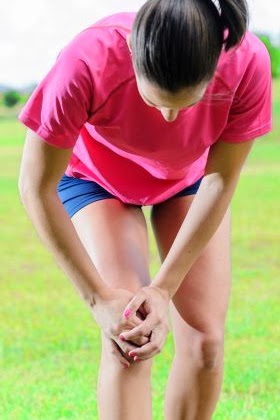Anterior knee pain is also known as patellofemoral
pain syndrome. The knee cap’s scientific name is patella and this is the part
of the knee that’s mainly affected when a person has this problem. And since
most people who are affected by this experience knee pain from running, it is also popularly known
as runner’s knee.
The problem could also go beyond the knee cap too,
as there are cases wherein the tissues and cartilages underneath the knee cap
can start to soften and even deteriorate. And since these can no longer support
the patella efficiently, pain and other knee problems can be experienced. If
therapy is recommended, one can adopt patellofemoral pain syndrome exercises.
Understanding
Anterior
The knee’s basic structure puts the patella or knee
cap right in front of the entire knee mechanism. When a person moves such as
when one goes for a walk, the knee bends and the knee cap glides so as to
accommodate such movements.
If the surrounding tissues and muscles on the
patella are not that strong and well-established, this could greatly affect the
knee cap tracking and can cause pain to a person. And if the activities engaged
in are really intense such as when one is into physical sports or training
exercises, improper patella tracking can even lead to injury.
There are also cases wherein the abnormal
positioning of the patella is inborn. And if there’s a poor alignment of the
knee cap to the rest of the bones in the same area, this makes a person prone
to knee pain and injuries. That’s why experiencing knee pain from running is a common
occurrence to those who have this case.
Causes
of Patellofemoral Pain Syndrome
The internal mechanism of the knee which could be
affected by poor patella tracking can be one of the main reasons for developing
PFPS. Moreover, if one is always engaged in activities and sports such as
football, basketball, cycling, skiing, and the like, it also makes a person
vulnerable to such problem.
You will notice that all the aforementioned activities
demand a lot of work on the knees. The legs and feet need to maintain balance,
and the knees are twisted in different directions when running, jumping, and
dealing with obstacles on said sports. It is for this reason why athletes often
suffer from leg and knee injuries.
And there are other factors that can lead to the
development of runner’s knee too, even if you are not that active in sports and
other similar activities. Studies show that having flat feet also makes one
prone to anterior knee pain. The reason for this is that flat footed people
can’t support their body weight properly and their knee joints can become
overloaded with pressure from their body weight.
Patellofemoral pain syndrome exercises Can Help Ease the Pain of Anterior
Knee Pain
The pain associated with PFPS varies from person to
person. When treated immediately by engaging in patellofemoral pain syndrome exercises, the
symptoms can be alleviated right away. Performing such exercises regularly can
also help avoid future knee problems.

